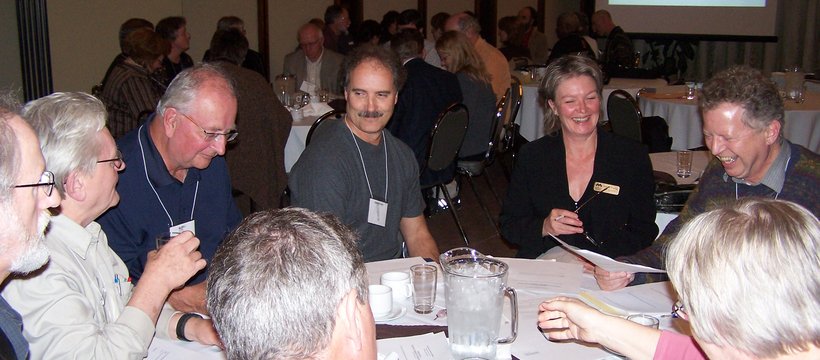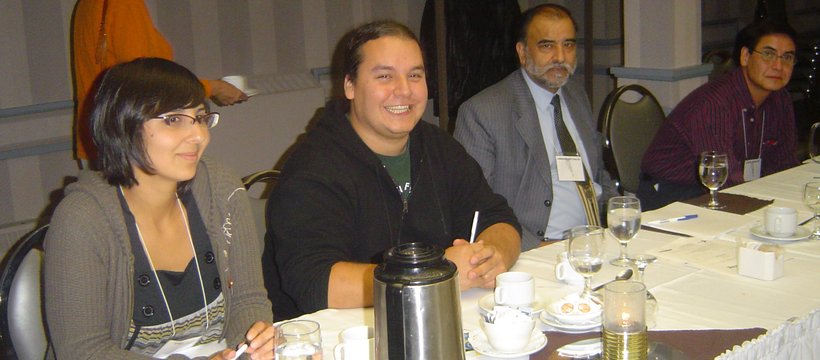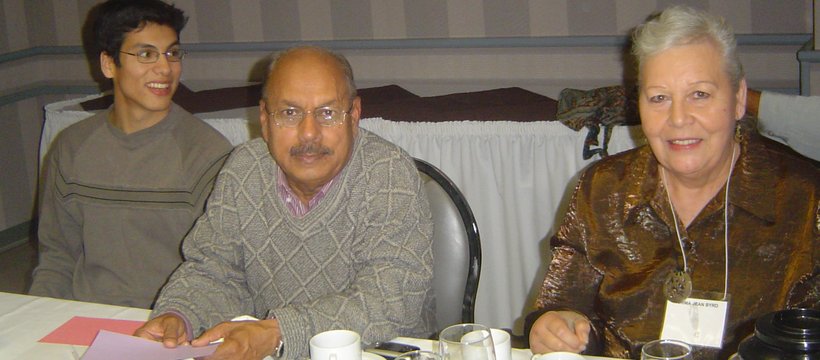More Change and Revitalization: 2008 - 2009
The province began 2008 with a new government in place when the Saskatchewan Party took over from the New Democrats. Premier Brad Wall and his team began working immediately on new growth strategies for Saskatchewan. The new Minister for Culture, Youth and Recreation was the Hon. Christine Tell.
As part of the ongoing Funding Review process, the SaskCulture Eligibility Committee completed discussions with 12 provincial cultural organizations that received annual global funding from the Culture Section of the Trust Fund. These recommendations, which included taking groups off the eligibility list, were approved by the Board and set in motion a two-year consultation on change for the organizations involved.
The Funding Review recommendations also led to big changes in the funding delivery system in 2008-09, reducing the amount of different organizations serving as third party funders, as well as providing better alignment of arts funding in general. First of all, the Saskatchewan Arts Board was given the responsibility for adjudicating funding for all the eligible provincial arts organizations that received funding from the Culture Section of the Saskatchewan Lotteries Trust Fund for Sport, Culture and Recreation. This enabled the Saskatchewan Arts Board to better align the funding needs in the sector, and avoid duplications and gaps in funding for the arts community. As well, the SAB took on the delivery of the former Festival Grant Program, formerly delivered by Saskatchewan Cultural Exchange Society (SCES), and the Media Arts Grant, formerly delivered by the Saskatchewan Motion Picture industry Association (SMPIA). These programs have since been merged into other SAB funding programs.
As part of the Funding Review recommendations, SaskCulture took on the delivery of the Museum Grant Program, formerly delivered by the Museums Association of Saskatchewan. SaskCulture also made changes to the delivery of the Métis Cultural Development Fund, renewing its partnership with Gabriel Dumont Institute, which continues to support the adjudication and promotion of the program. All delivery changes were in place by June 2009.
The additional funding helped SaskCulture establish a new Capacity Building Grant Program (CBG), launched early in 2008, to help cultural organizations respond to emerging needs and new initiatives/opportunities not already funded by conventional support systems. This program was offered until 2014.
The Tri-global partnership worked together over several years to compile a consistent and easy-to-use listing of funding resources called the Community Resource Guide. It was designed to assist Tribal Council Coordinators and District Coordinators in their work with communities. The partnership also launched the Saskatchewan Aboriginal Resources web site at www.saskaborignalresources.ca to provide community leaders with one-stop access to information designed to support sport, culture and recreation programming and services in communities throughout Saskatchewan. Both of these tools have since been discontinued. SaskCulture also worked with the First Nations and Métis Advisory Circle, in partnership with the Multicultural Community of Interest Committee, to develop the content for the 2008 SaskCulture Gathering & AGM, entitled Engaging Culture: Sharing the Seeds of Success. The Gathering attracted a record attendance of 168 people, many of which were of First Nations or Métis heritage.
At this point, the cultural community was relatively content with the goals of the new government. SaskCulture and the SAB tried to hold a MLA Reception in November 2008, but due to low registration, the event was cancelled and partnership advocacy efforts were placed on hold.
By early 2009, SaskCulture was back working with its partners on another Lottery Licence Agreement for 2009-2011. By April 1, a new agreement was still not in place, so the existing agreement was extended until June 2009. At that time, a ministerial change at the newly named Saskatchewan Tourism, Parks, Culture and Sport caused the process to slow down once again to give Hon. Dustin Duncan the time to increase his understanding of the system. In October 2009, a new 5-year Lottery Licence Agreement was signed between the provincial government and the Tri-Global partners – with a 3.75% licence fee. The partners were extremely happy with this agreement that would enable the system to provide a minimum of 3 per cent increases to funding blocks, aimed at helping increase lagging salaries and wages in the sectors.
The amalgamation of all the Districts for Sport, Culture and Recreation was completed by March 2009. The Districts in order of amalgamation are: Northern Sport, Culture and Recreation District (August 2006); Southeast Connection Sport, Culture & Recreation District; Parkland Valley Sport, Culture and Recreation District (September 2007); Lakeland District for Sport, Culture and Recreation (April 2008); South West District for Culture, Recreation and Sport (April 2008); Rivers West District for Sport, Culture and Recreation (January 2009); and Prairie Central District for Sport, Culture and Recreation (April 2009). The Saskatoon District and Regina Sport District stayed the same. SaskCulture continued to work with its tri-global partners to help support these new organizations in their new role in community development. In October 2009, the SaskCulture membership voted in constitutional changes that would enable Districts to become voting members of SaskCulture.
The Districts were highlighted for their role in helping support the Ministry of Tourism, Parks, Culture and Sport, with its Community Dialogue Sessions, which took place throughout the province from November 2008-January 2009. These sessions were designed to collect information to inform a new provincial cultural policy. SaskCulture provided Districts with guidance and support in developing inventories of cultural leaders.
During this period SaskCulture also completed a study to determine the feasibility of the proposed Creative Kids program, a new initiative aimed at increasing youth access to cultural activity. The program has been designed to raise and distribute funds to ensure that all children, regardless of their financial barriers have the opportunity to access quality cultural programming. The process of hiring a coordinator to run the program began later in the year.
At roughly the same time, the Heritage Saskatchewan, officially incorporated in 2009 was created by SaskCulture, in consultation with the community, to provide a single, strong voice for heritage interest in the province. After ten or more years of consulting with the community on the idea of a provincial organizations, SaskCulture was pleased to see the community come together to support the concept in a range of consultations held in 2008, and a Heritage Forum held in February 2009. Following the Forum, the existing Heritage Community of Interest Committee was appointed as the interim Board of the new organization and they in turn hired an Interim Chief Executive Officer.
SaskCulture also held one of its best attended annual Gatherings in October 2009. The event, Leadership 101, had two streams of sessions, offering both volunteers and staff of non-profit organizations, several professional development opportunities, including: board government, risk management, executive director performance evaluation, financial management, etc. Over 250 people attended and evaluations showed that the majority were extremely happy with this type of event.
It was shortly after the Olympics in 2010 that the government officially released the first comprehensive provincial cultural policy for the province, called Pride in Saskatchewan. The cultural policy was based on feedback from the government obtained through its extensive Community Dialogue consultations as well as an extensive review of past work compiled into the document called Reflections. SaskCulture spent many hours working with its government partners on the formation of this new policy. While still an important document, the government has spent very little time ensuring the principles are maintained.






